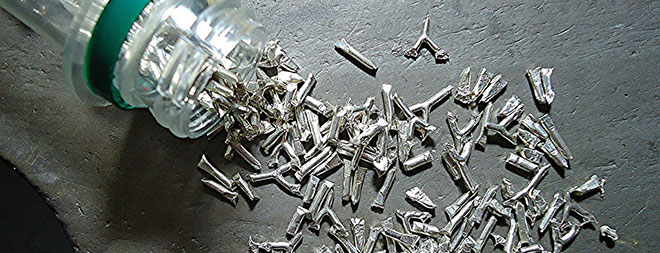Nano[Ag]ressions

(ISNS) -- From socks to medical supplies, retailers have spent the past few years seeing silver. The popular precious metal has powerful antimicrobial properties, especially when broken down to nanoparticle size, so it’s been added to everything from washing machines to keyboard covers. But two new papers suggest that the miniature version of the material should be used cautiously.
"Silver nanoparticles are a continuous source of ions that could be toxic for aquatic organisms that are swimming around or in the sediment. It will end up in the food chain,” said Smitha Pillai, an environmental toxicologist with the Swiss Federal Institute of Aquatic Science and Technology and first author on a paper published in March in the Proceedings of the National Academy of Sciences.
In the study, algae were exposed to silver ions, which are silver nanoparticles release in water. Larger pieces of silver release some ions, but at much lower concentrations. Within fifteen minutes, the algae showed signs of being exposed to a toxin, including significant reduction of photosynthesis and a defense response. Previous research has showed that silver ions are toxic to rainbow trout, causing eggs to hatch before they are fully developed and leading to high rates of death for the baby fish.
A search for “nanosilver” at online retailer Amazon.com returns 612 results, ranging from food storage containers to supplements, all touting supposed benefits of the substance. “Nano-silver material can kill up to 650 types of bacteria,” reads the description for a keyboard cover impregnated with it.
The most common source cited for the 650 strains is a 1978 issue of the now-defunct Science Digest, which claimed that silver can kill 650 “disease organisms,” though the article provided no source.
In 2006, Samsung introduced a line of washing machines that released silver ions into the wash water. When asked about why the line was discontinued, a representative emailed the following statement to Inside Science: “We are continuously innovating our products with new technologies to meet the highest level of quality and performance consumers have come to expect from the Samsung brand.”
A separate research paper, published in the February issue of ACS Nano, studied the effects of nanosilver on human intestinal cells. Researchers found that exposure to nanosilver did damage to the cells’ DNA and temporarily changed their protein production.
Sign up for the Live Science daily newsletter now
Get the world’s most fascinating discoveries delivered straight to your inbox.
However, cells can rebound from the damage. They are full of other ions that will bind to the silver, rendering them harmless and allowing the cells to recover. One such ion is chloride. "As soon as ions go inside the cell, there are a lot of salts in the cell that will scavenge the silver. If we have silver and chloride, they will react. Silver chloride is not toxic," said Thiago Verano-Braga, a molecular biologist at University of Southern Denmark and first author on the ACS Nano paper.
Individual cells recover when they are no longer exposed to silver ions. But Verano-Braga worries that if nanosilver is not disposed of properly, it could become more prevalent and lead to trouble. “If this material is not handled well, it will accumulate in the ecosystem,” he said.
If it gets into the water supply, nanosilver could move up the food chain in a process called bioaccumulation, perhaps reaching a point at which cells will contain too much silver to operate normally. Algae may be exposed to a small amount of silver, but animals that eat the algae will get a little more silver with each meal. In this way, the higher up the food chain you go, the more concentrated the silver will be.
“It's already been [known] in the science community that there are negative effects with nanoparticles, but it somehow didn't reach the general public. That really concerns me,” Verano-Braga said. Many materials are being miniaturized and sold at nano-size, in everything from batteries to sunscreen. But their tiny stature means they can get into parts of the body larger particles can’t reach - past the blood-brain barrier, for instance. There’s been little research into possible human health concerns (though no signs that they’ve caused trouble, either).
Based on Verano-Braga’s research, Denmark’s version of the FDA, the Danish Veterinary and Food Administration, recommended that people stop taking the silver supplements that are commonly sold as a natural remedy under the name “colloidal silver.”
Other members of the scientific community don’t share these concerns.
“Most silver toxicity experiments we have had are from waste water from photofilm processing and using silver to seed clouds for rain. I am aware of no big problem from either, certainly not like [lead, mercury or arsenic], which cause major human and environmental troubles,” Simon Silver, a microbiologist at University of Illinois at Chicago who studies how bacteria cope with toxic ions, including silver, wrote in an email to Inside Science. “Most things are toxic in large enough amounts.”
Pillai sums it up most succinctly. “I think we should be worried but not panicked. We don't know much about it, and with more and more consumer products coming onto the market with silver particles, the chance of organisms in the wild being exposed are getting higher and higher,” she said.
This story was provided by Inside Science News Service. Cat Ferguson is a science and technology journalist based in California's Bay Area.









